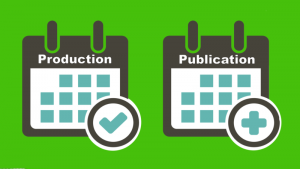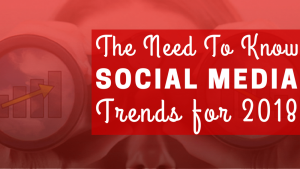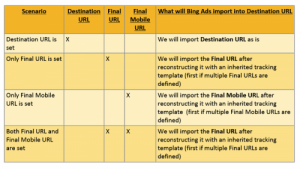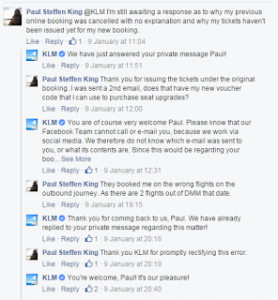15 Things You Need To Know About Programmatic Native
by Tobi Elkin, Staff Writer @tobielkin, February 1, 2017
This article originally appeared on NAI’s blog and has been reprinted here with permission.
Programmatic native is becoming an increasingly important way for advertisers to achieve scale. Of course “native” means different things to different people, and when you combine it with “programmatic,” it becomes a maelstrom.
A couple of weeks ago, the Native Advertising Institute came out with an article that detailed 15 things you should know about programmatic native. Written by Bence Bathi, founder of London-based Totally Native, Ltd, the piece is really quite helpful as a guide. Bathi doesn’t even start with native, but rather dives into all the other elements in the programmatic landscape that one needs to understand before going to native.
No. 1:Ad exchanges or SSPs (supply-side platforms)
OpenRTB protocols and more publishers creating native advertising have enabled the transaction between the demand side (advertisers) and the buy side (publishers). “These ad exchanges execute and manage the auction across thousands of publisher sites creating inventory sources that are well worth tapping into,” Bathi notes. He cites native ad exchanges TripleLift, Sharethrough, Nativo, Connatix, and Avocarrot and says SSPs are very similar to ad exchanges in terms of function, however SSPs are supposed to optimize yield for publishers to ensure the sell side gets the highest possible price for inventory.
No. 2:Ad networks
Ad networks aggregate ad inventory and pool publishers together. They can be good sources of ad inventory especially when native inventory remains scarce compared to display, according to Bathi. “Some networks are now blurring the lines between a closed network and an ad exchange to maximize the revenue potential, but the following companies can be considered as native ad networks: Outbrain, Taboola, Adyoulike.”
No. 3. DMPs (data-management platforms)
Bathi notes that DMPs enable marketers and publishers to house their audience data. While DMPs are less likely to be applied to native advertising campaigns, “the need for efficiency and ‘recycling’ of campaign data will be more and more required.” So Bathi is optimistic about the role DMPs will play in programmatic native.
No. 4. DCO (Dynamic Creative Optimization)
Bathi says that DCO is an often “overlooked technology.” DCO looks at the “performance of native ads in the campaign (for example the image) and displays the best performing ad to the audience while giving enough chance for other or fresh creatives to accumulate enough data. This typically carries a premium CPM, but this is a sound investment.”
No. 5. Impressions
The number of times an ad appeared during the campaign.
No 6. Clicks
Clicks marks the amount of times users clicked on your ad throughout the campaign.
No. 7. CTR (Click-Through Rate)
The percentage of clicks that was achieved against the number of times the ad(s) were shown.
No. 8. CPM
Cost-per-mille “is the most commonly occurring cost of media unit in the digital space. This unit marks the price of 1,000 ads shown for your campaign.”
No 9. CPC (Cost Per Click)
Cost-per-click is valued by performance marketers because it’s a “measurement of active user action (typically this is a click) against your media investment. Considering that programmatic native advertising has an impressive CTR, this CPC is often competitive with that of paid search campaigns,” Bathi says.
No. 10. CPE (Cost Per Engagement)
The metric is calculated as cost divided by the number of engagements. Not all programmatic partners offer an engagement metric or measurement, and the definition of what an engagement is differs from partner to partner, according to Bathi.
No. 11. CPCV (Cost Per Completed View)
“This is a metric that will come up if and when you run native video campaigns. CPCV or Cost Per Completed View is a unit price of a successfully (100%) viewed video ad. The lower this is, the more value you get for your native video campaign.”
No. 12. eCPM/eCPC/eCPE/eCPCV
“In real-time bidding you can set how much you are willing to bid for users with different characteristics and simultaneously the audience you’re after other advertisers may try to reach too, the unit price of the native placement can change. Sometimes it can be high, sometimes it can be low. The ‘e’ stands for ‘effective’ in all of these metrics.”
No. 13. In-Feed / In-App Native Advertising
The in-feed native ad format is the most popular form of native advertising at the moment. It appears on platforms like Facebook and Twitter. These placements blend seamlessly into the publishing environment. Many publishers have adopted in-feed native.
No. 14. Content Recommendation Widgets
This is the content recommendation function, or the suggestion readers find at the bottom of a Web page that says “Other news on the web.” These widgets are often installed by publishers to increase traffic and/or monetize it.
No. 15. Outstream Video or Native video
This format is one of the most effective video ad units for native. The outstream format “is often placed in-text in the content and activated as the user scrolls down the article and has a minimum of 50% viewability.” Teads is one provider of this format.
MediaPost.com: Search Marketing Daily
(61)
Report Post







